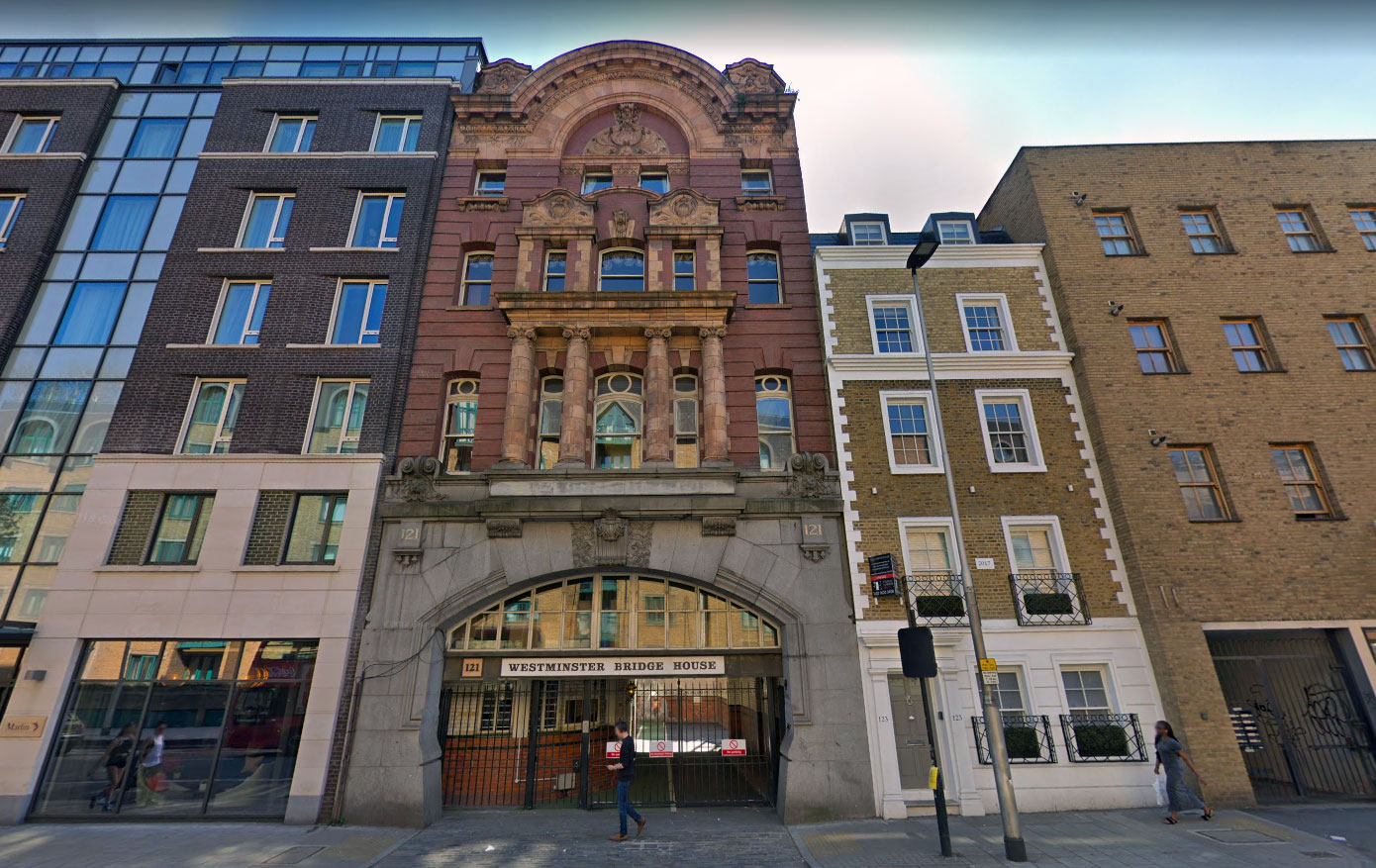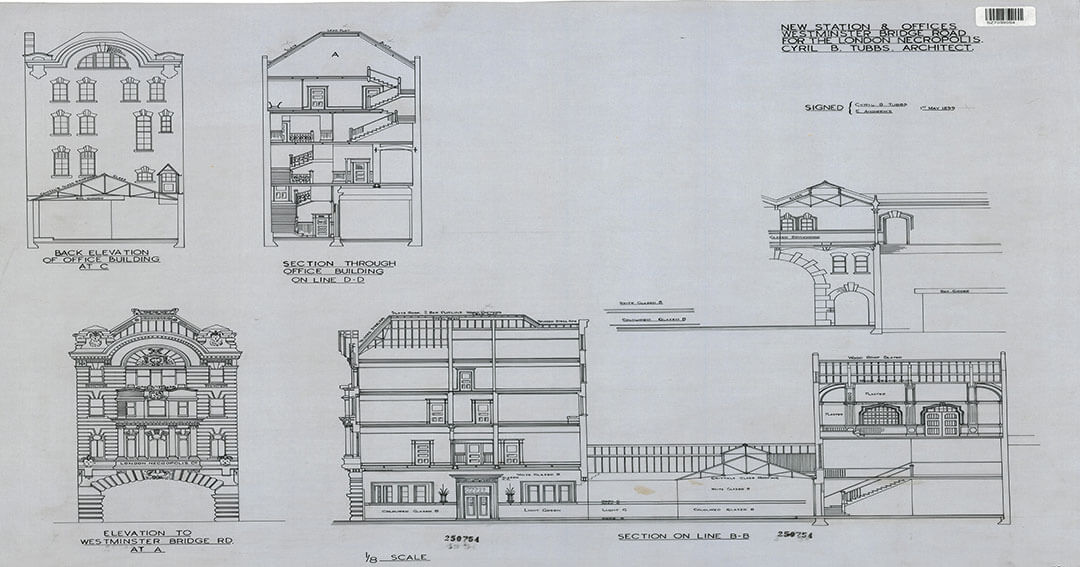The living could soon reside where the dead once rested on their way to their final resting place, as the Necropolis railway station in Waterloo could be turned into flats.
As London’s graveyards overflowed and cemeteries were built on the outskirts of London, the London Necropolis and National Mausoleum Company was granted permission to build a huge cemetery in Woking.
In order to get the dead from London to Woking, they went by train. As Waterloo station passengers probably wouldn’t want to see the dead passing through the station, a dedicated Necropolis station was built just down the road.
The cemetery and railway link opened in 1854.
The Necropolis station we see today on Westminster Bridge Road is the second station, as an earlier one was removed to allow for the expansion of Waterloo station.
The surviving building opened in 1902 with its grand stone and red-brick frontage, and an upper floor glass-covered first-class reception. Everyone else used a separate entrance around the corner in Newnham Terrace.
In Victorian London, even the dead worried about what class you belonged to.

Living London, Its Works and Its Play, Its Humour and Its Pathos, its Sights and its Scenes, Vol. III
The back of the building and the trackside platform was badly damaged during WW2 and the station effectively closed in 1941. The station was much larger than it seems today, as much of it has since been torn down and replaced with an office block, leaving really just the entrance building for first-class passengers.
If you zoom in (free registration needed) on this photo, you can see the remaining platform and railway tracks, and just to the north, the surviving building.
The other survivor is the railway arches that supported the since vanished platform, and a lot of that space is now occupied by a series of portacabins rented out as artists space by Make Space.
The surviving building is currently occupied as an office.
The developers want to convert it into five 2-bed flats and one 3-bed flat, with the space increased by adding a rear extension over the back yard.
The council has already indicated that the loss of office space needs to be justified for the application to be approved, although the developer says that the building cannot justifiably be upgraded for modern office requirements, and it’s been difficult to find office tenants for the building in its current state.
If it does get approval, people will soon be sleeping inside a railway station for the dead.









This Britain from Above link took me to a rabbit hole. So many amazing images and I found one of my area and had a great time looking at the buildings and how everything has changed (or not in some cases).
Difficult to believe that Lambeth really need to preserve office space! Demand for expensive central London space is going to take an enormous hit from Covid, and the lessons employers will learn about remote working.
Council aren’t saying it needs to be preserved as offices but the change needs to be justified which is standard procedure when you apply to convert non residential to residential.
Quite easy to do by demonstrating that you’ve tried to rent out the space for a certain period of time but prospective tenants won’t rent the space because it doesn’t need modern office standards and conversion would cost too much.
The station at the other end, in Brookwood, still exists and has people living in it. Last year I visited and met one of the Saint Edward Brotherhood who pointed it out to me. It’s now part of the Orthodox Christian monastery.
I remember travelling on a Southern Region suburban train in the mid-1950s which still displayed the pre-nationalization Southern Railway system map showing the Necropolis branch at Brookwood.
I think that the local residents won’t allow it to happen. As it’s a listed building.
Local residents might object but its locally elected councillors that sit on the planning committee that will decide on the application..
And how do you know they will object? They may very well welcome new residents to the area!
Equally listed status does not preclude any sort of development as long as the listed elements are retained.
So will people be dieing to live there?
If the building does get developed into flats, I hope that the interiors match the flavor of the exterior. It would be sad to see just more endlessly boring ultra modern flats where everything is a shade of gray.
Thanks for this, Ian. I’ll be forwarding it to the Victorian Society (which covers the Edwardian period too). It’s not clear how much original material would be affected by the change from office to residential, I suspect not much, but they will cast their expert eye over the plans.
It’s a shame that there’s nothing on the front of this building to identify its history. It would be great to see a plaque about the Necropolis Railway, such as those produced by the Railway Heritage Trust (see http://railwayheritagetrust.co.uk/rht-plaques/). If the building is going to be redeveloped does that provide an opportunity for this to happen?